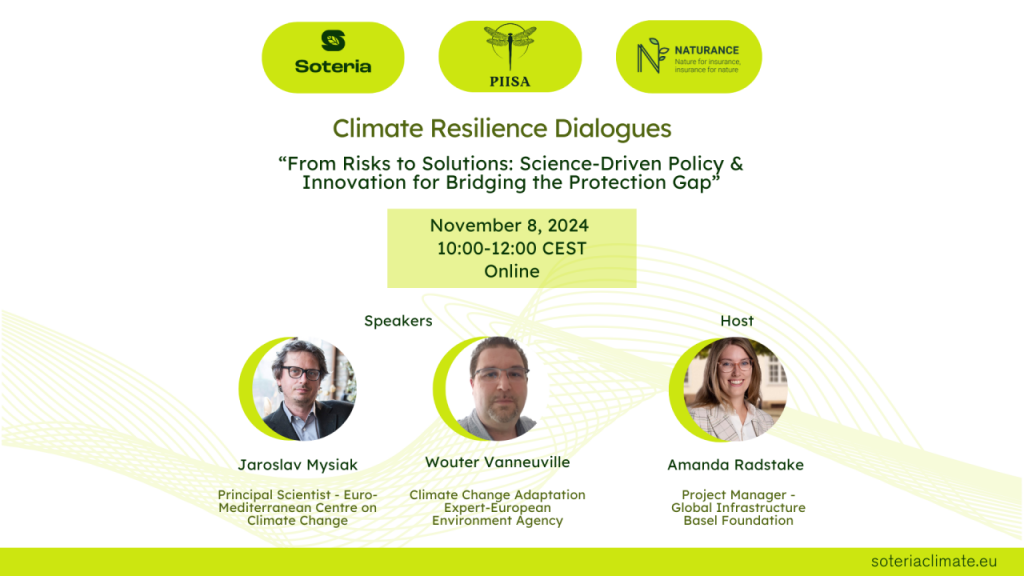SOTERIA (Solutions Testing for Regions through Insurance for Climate Adaptation) is an EU-funded project aimed at enhancing climate resilience by improving risk assessments, early warning systems, and disaster management strategies. It focuses on developing innovative solutions to protect people, property, and infrastructure from climate-related hazards. The second climate resilience dialogue webinar organised by the project, “From Risks to Solutions: Science-Driven Policy and Innovation for Bridging the Protection Gap,” has featured intervention by Wouter Vanneuville (EEA) and Jaroslav Mysiak (CMCC).
The webinar sought to explore how science and innovative insurance instruments can drive transformative change and contribute to policy implementation in Europe and beyond. Wouter presented the recent and ongoing work of the European Environment Agency (EEA). He discussed the upcoming State of the Environment Report (SOER), which provides a comprehensive, five-year review of Europe’s environmental health, guiding policy with insights and projections. He emphasised the need for connected, integrated approaches in thematic and spatial contexts, with the next SOER to unify findings from various thematic reports. He also introduced the European Climate Risk Assessment (EUCRA), which identifies 36 key climate risks and maps impact pathways to support targeted policy responses across sectors.
Discussing the 2023 Just Resilience report, Wouter highlighted the complexity of assessing resilience justice, emphasising qualitative indicators. He then reviewed the Key Types of Measures report, which classifies adaptation strategies under governance, finance, technology, nature-based solutions, and behavioural change to form a holistic resilience framework. Finally, he covered the EEA’s Monitoring, Reporting, and Evaluation (MRE) program, stressing that MRE should start at the beginning of adaptation planning, rather than as a later-stage process. He noted that financing remains a challenge, especially for nature-based solutions, as stakeholders often question costs and benefits.
Jaroslav spoke about the NATURANCE and PIISA projects, building on Wouter’s previous discussion. He emphasised the need for climate risk assessment and the European Climate Risk Assessment (EUCRA) to not only identify risks but also explore solutions, supported by solid evidence. NATURANCE and PIISA are advancing business innovation in insurance by exploring new ways to provide coverage, countering the trend of insurers pulling out of high-risk areas. Jaroslav highlighted a shift in how insurance is perceived—from a purely financial service to a form of financial protection that is viewed as a public good and a right. He argued for the importance of designing innovative, win-win strategies, such as combining insurance with nature-based solutions (NbS), to improve resilience.
The NATURANCE project aims to evaluate the feasibility of integrating disaster risk financing with NbS, fostering collaboration, developing policy labs, and building capacity for green financial innovations. PIISA seeks to increase climate-related insurance coverage in Europe, aiming for at least 50% coverage of losses linked to climate change by 2030, while also narrowing the adaptation gap through innovative insurance products, data-sharing, and regional support.

